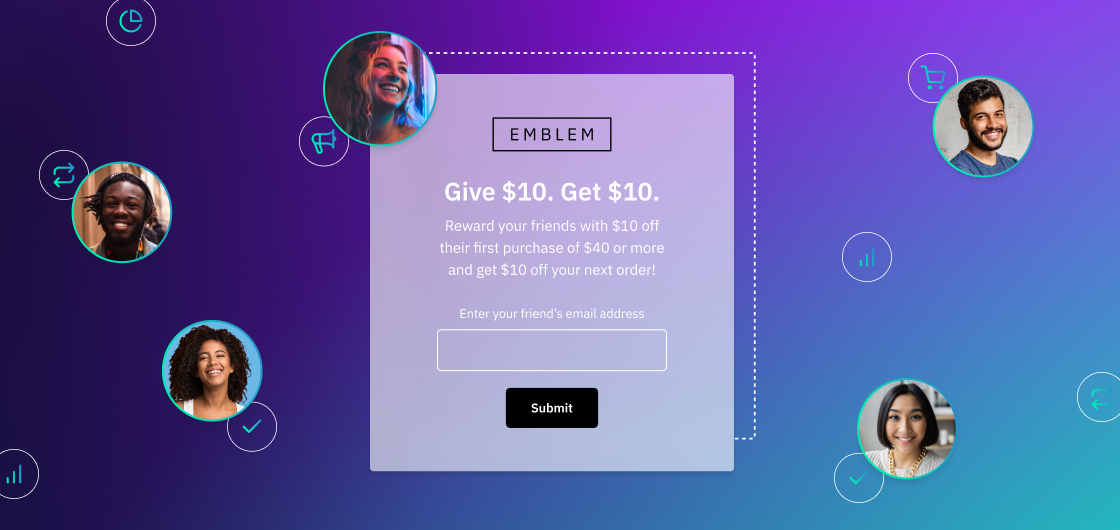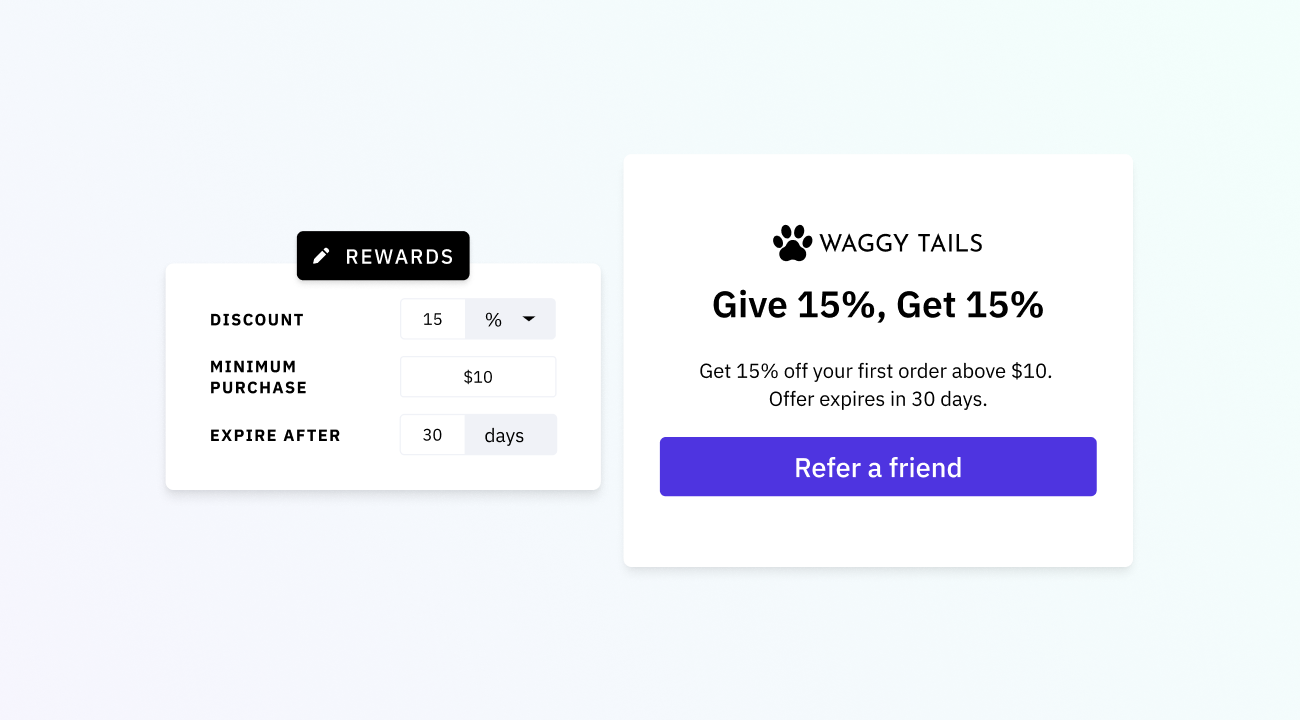
- Customer Marketing
- Personalization
- Quizzes
- Referrals
- Reviews and UGC
How Health and Wellness Ecommerce Brands Can Drive Success in 2025
Megan Wenzl | Nov 18, 2024
Jul 20, 2023 | 5 minute read

Megan Wenzl
Content Marketing Manager
In our previous blog, we explored the different ways your brand can benefit from implementing a customer referral program, including improving loyalty and retention, as well as optimizing marketing spend and driving customer acquisition. However, the success of any post-purchase referral marketing campaign often depends as much on a brand’s strategy and how the program is built as it does on referrals themselves.
On that note, let’s take a look at five important steps your brand can take to create an effective customer referral program in 2023:
In order to launch an effective referral program, you’ll first need a strategy for identifying your most loyal and satisfied customers. One of the easiest ways to do this is by ensuring that you have mechanisms in place for collecting detailed feedback, whether from high-quality reviews or customer surveys.
For example, customers who have taken the time to leave a positive review (4-5 stars) may be more willing to recommend your brand and products to their friends and family. Similarly, those who have provided positive feedback through a customer experience survey can also be great targets for your referral program. In fact, survey types such as Net Promoter Score (NPS) specifically measure the likelihood of a customer recommending your brand based on their own purchasing experiences. This provides an easy way to identify – and subsequently maximize – your most loyal customers.
The offer of incentives, or specific rewards in exchange for customer recommendations, is one of the primary reasons why referral programs tend to be so effective. In a recent Okendo survey on retention and loyalty in ecommerce, an overwhelming majority of respondents (70%) said they would be more likely to refer a brand to their friends and family if they had the opportunity to receive a reward.
The best part is that incentives don’t need to be overly costly for your business, and can be as simple as offering 10% off a future purchase for both the customer and the recipient of their referral. Moreover, when choosing which rewards to offer, you want to make sure you have the option to add certain terms and restrictions to ensure that referral codes aren’t abused, such as an expiration date, minimum purchase amount, and/or limit the type of products the referral reward works with, such as high-value products.

When building out your referral program, it’s important to consider both how and when you’ll want to request a referral recommendation from your customers. Above all, you’ll want to ensure that you’re letting customers know about the program throughout their entire purchasing journey, particularly when their level of engagement is at its highest. For example, post-review and post-purchase are all excellent times to request a referral.
However, timing is only one component of an effective referral program. You’ll also want to design a referral process that provides both a seamless and engaging experience for the customer. This might mean allowing your customers to add a personal message when referring a friend or family member, or providing an easily shareable link that can be posted to their social media accounts.
Additionally, sending referral requests is a great opportunity to tap into the power of personalization. Using the zero-party data obtained through reviews and surveys, such as unique customer attributes, behaviors, and product preferences, you can easily segment your email lists based on these data points to create personalized referral messaging campaigns, and ultimately strengthen your relationships with loyal customers.
In order to maximize the overall benefits, it’s critical to set clear goals and determine at the outset what exactly you hope to accomplish through the implementation of your customer referral program.
As Stephanie Liu, founder of the digital marketing and ecommerce agency, Levitate Foundry, told us: “The key to making a real impact with a referral program: consider your KPIs and goals before crafting your strategy. When you figure out what you want to achieve first, that becomes the North star for everything you do next.”
For example, are you more interested in acquiring a certain amount of new customers from referrals each month, or do you want to know the overall conversion rate from referrals? These are crucial questions to ask, and establishing a set of specific objectives will help inform the actual creation of your referral program.
Of course, if you’re going to set specific goals, you’ll also want to ensure that you have a reliable way to track and monitor your performance in order to continuously improve your referral program, as well as to integrate new strategies and initiatives down the line. This can easily be achieved using a referral platform like Okendo, which allows you to measure your program’s performance based on your brand’s clearly defined objectives.
Finally, while the benefits of an effective referral program can be transformative, the process of identifying loyal customers and sending out referral requests can also be incredibly time-consuming and eat into valuable resources. For this reason, it’s worth considering the use of an automated referral program platform, which makes it easy to reach your goals and acquire new customers.
For example, using an all-in-one reviews, surveys, and referrals platform like Okendo, you can easily identify and turn your loyal customers into brand advocates. And with instant access to zero-party through reviews and surveys, you’ll be sure to always target the right customers with referral requests at the time they are most engaged. In addition, you can invite customers to refer their friends or family at any point in the customer journey with email and SMS through Okendo’s robust Klaviyo integration.
Interested in learning more about referral marketing, and how it can help you boost customer loyalty and spread the word about your brand? Check out our in-depth referral marketing guide.
Related articles
Ready to learn more?